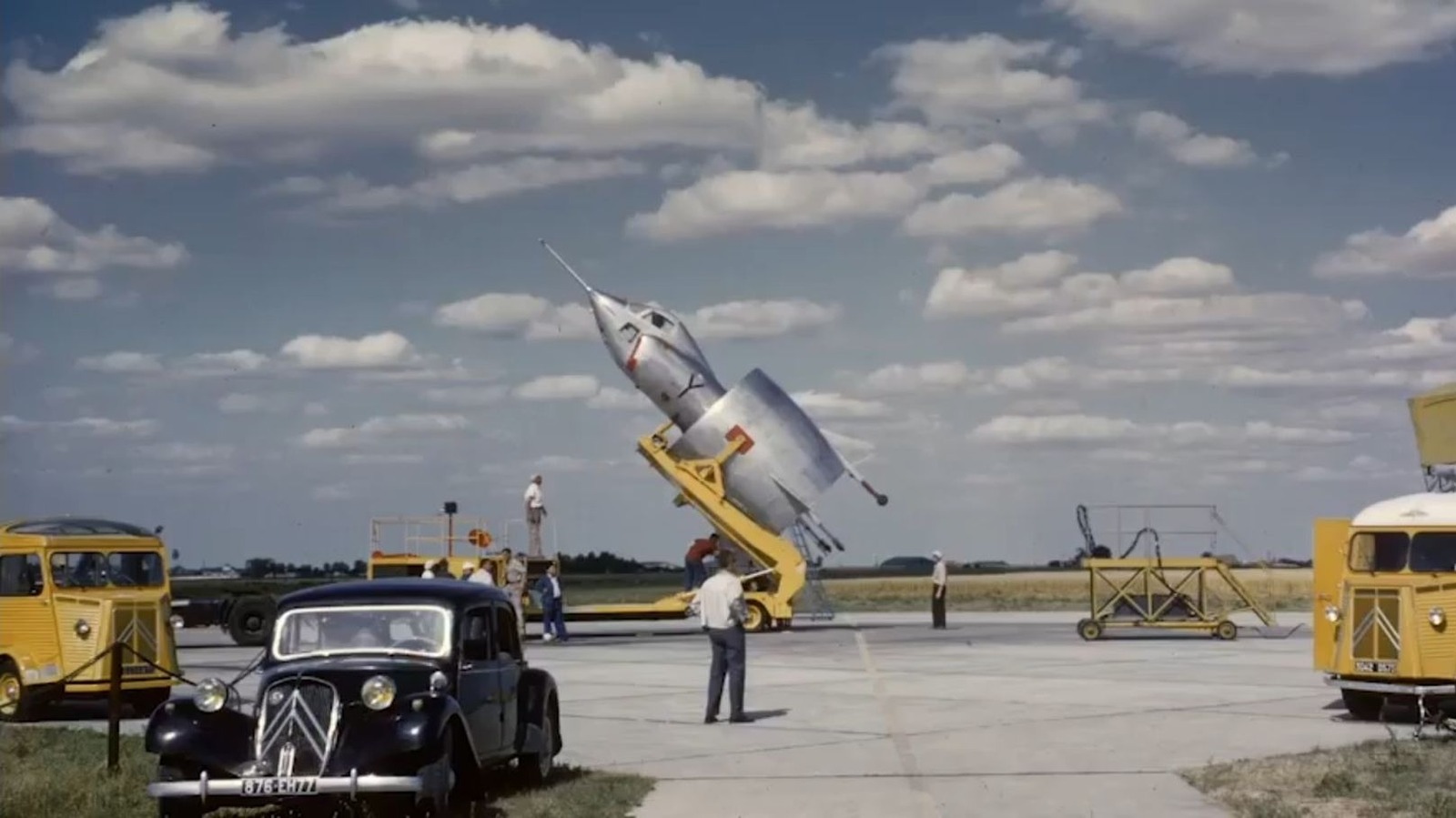
Powered by an axial-flow turbojet engine, the Coléoptère had a 10.5-foot diameter ring-shaped “wing” that encircled the bottom half of the plane. SNECMA hoped to eventually make it a RAM jet by compressing the incoming air, mixing it with fuel, and lighting a fire that would send it well beyond MACH speeds, Mustard notes.
During take-offs and landings, thrust would be deflected using vanes housed in the engine’s exhaust. Four small fins strategically placed around the “wing” would act as rudders to provide directional control while in flight. Retractable fins tucked inside the nose would deploy and help tilt the plane upright into “landing” mode.
An innovative swiveling cockpit seat allowed the pilot to remain in a locked and upright position based on the plane’s alignment. Since these were the days before powerful computer simulations, human test pilots had to strap in and give these prototypes a go. It began real-world testing in April 1959, and serious problems sprung up almost immediately. Without a stabilizing wing, the plane spun while hovering in the vertical take-off stage. Sitting like astronauts on top of a rocket, pilots had difficulty seeing the ground. Lastly, without wings, which theoretically would allow it to glide to safety if the engines failed, the Coléoptère would be doomed according to Mustard.
On July 25, 1959, SNECMA tested the plane’s ability to transition from vertical take-off into horizontal flight mode. It tilted too far, and the pilot couldn’t regain control. He ejected to safety, but the Coléoptère was destroyed in the process. Funding for a second prototype never materialized, and the project was scrapped (via Mustard).
Stay connected with us on social media platform for instant update click here to join our Twitter, & Facebook
We are now on Telegram. Click here to join our channel (@TechiUpdate) and stay updated with the latest Technology headlines.
For all the latest Automobiles News Click Here
